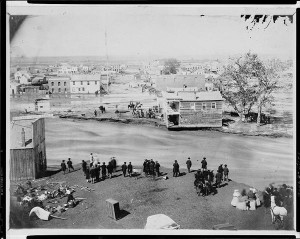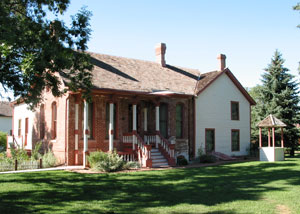My Experience With Department of Veterans Affairs
I am a U.S. Army veteran. I served from 1962 to 1965, so missed all the fun in Vietnam. I spent a year in the States training as a radar repairman and two years in Germany in a unit that provided support to a Hawk missile battalion. I didn’t like the army much, but enjoyed Europe and the people I worked with.
In basic training, I fired the M1 Rifle. In Germany, it was the M14 rifle. Both rifles are .30 calibers and loud, more powerful than the .223 caliber our military now employs. It took some time for me to get promoted past Private First Class, but when I was, I got the honor of leading a .50 caliber Browning machine gun crew. The Browning Machine Gun Caliber .50 M2 HB is a serious piece of machinery. On its tripod it weighs 128 pounds and fires about 650 rounds per minute. It is big, powerful, and very loud. All three weapons are loud, but the .50 takes loud to a new level. We had no hearing protection.
After firing, my ears rang for days. After firing the .50, the ringing never stopped. I knew I had hearing loss as well. Working for Denver Water, the hearing tests showed significant hearing loss and the tinnitus (ringing) was worse. Finally, in about 2008, I went to the VA after learning the VA provides hearing aids to any veteran with honorable service.
The hearing aids are a big help, and I applied for a service connected disability for the tinnitus and hearing loss. Not long later, I received a 10% service connected disability for tinnitus, but was denied for the hearing loss. In March 2009 I appealed the decision. After a long wait, the appeal seemed to have gone away.
Carol is persistent, keeping me on the case, and asking a retired VA nurse what we should do. She had Carol contact a person at the VA regional office who got the appeal going again. It was again denied, so I asked for a hearing before an administrative judge.
In March 2014 I had the hearing, with representation from the Disabled American Veterans. The judge apologized for my having to come in. There was case law in my favor, and I won. I am now waiting for a determination of my hearing related disability and benefits retroactive to March 2009. The DAV tells me I should hear soon.
During this entire wait I have seen VA physicians for my prescription medications ($8.00 for three months). I also got my medication for ADD and saw a VA psychiatrist for the prescriptions. I am on my third set of hearing aids from the VA. I have always been happy with the service providers at the Denver VA hospital. The VA bureaucracy is another matter.
As more Persian Gulf and Afghanistan veterans began using the VA, wait times increased, and I have spent lots of time on hold for the pharmacy. When I first got hearing aids, there was little wait time for an appointment. The wait times have steadily increased. The VA has always been underfunded, and that has increased dramatically with all the returning vets from the Middle East. The current scandal is a direct result of the VA trying to do its mission without enough money. There is also a lot of money spent on bureaucratic bloat, money which should go to service providers.
The largest health network in the country is simply overwhelmed. Managers had bonuses tied to wait times for appointments, so they cooked the books. Who is losing out? The veteran. I had good help in negotiating the bureaucracy and my appeal took five years. What about the vets who do not have an inside contact and the DAV working for them?
Most of the blame lies on the source for many of the nation’s current problems: Congress. The current scandal may result in changing the VA bureaucracy and may produce increased funding. Our nation’s veterans deserve the health care they are promised. I hope the care improves.







